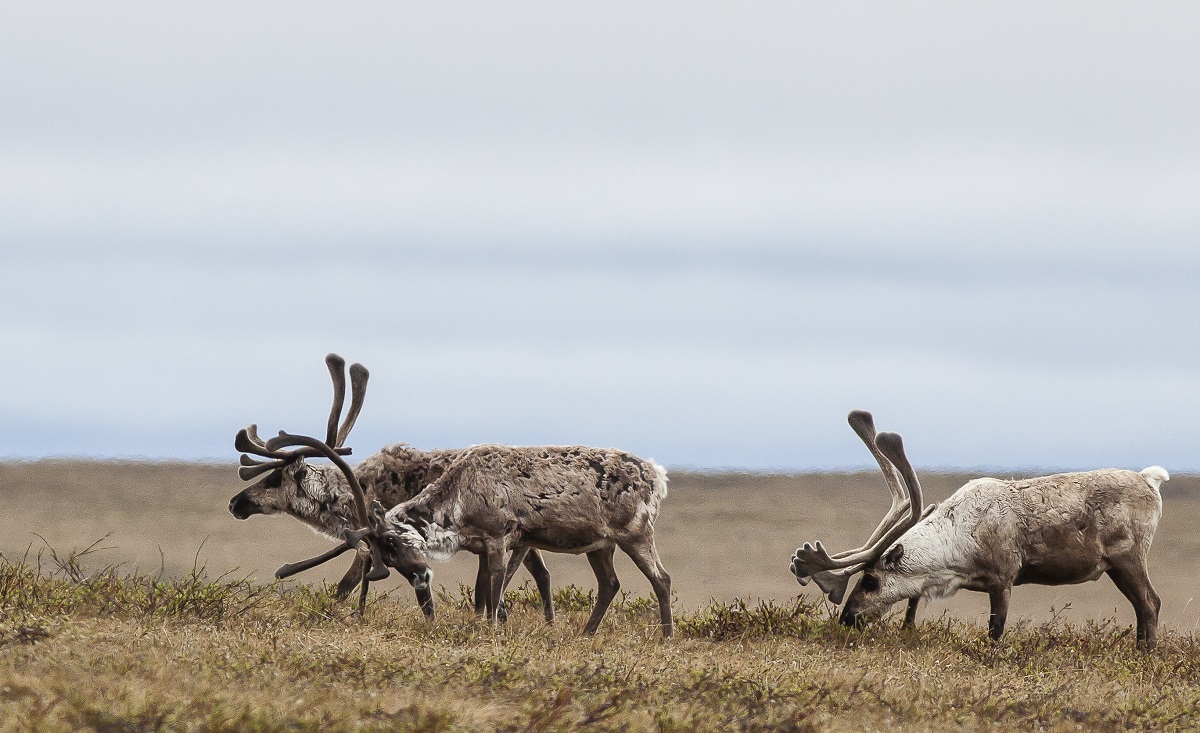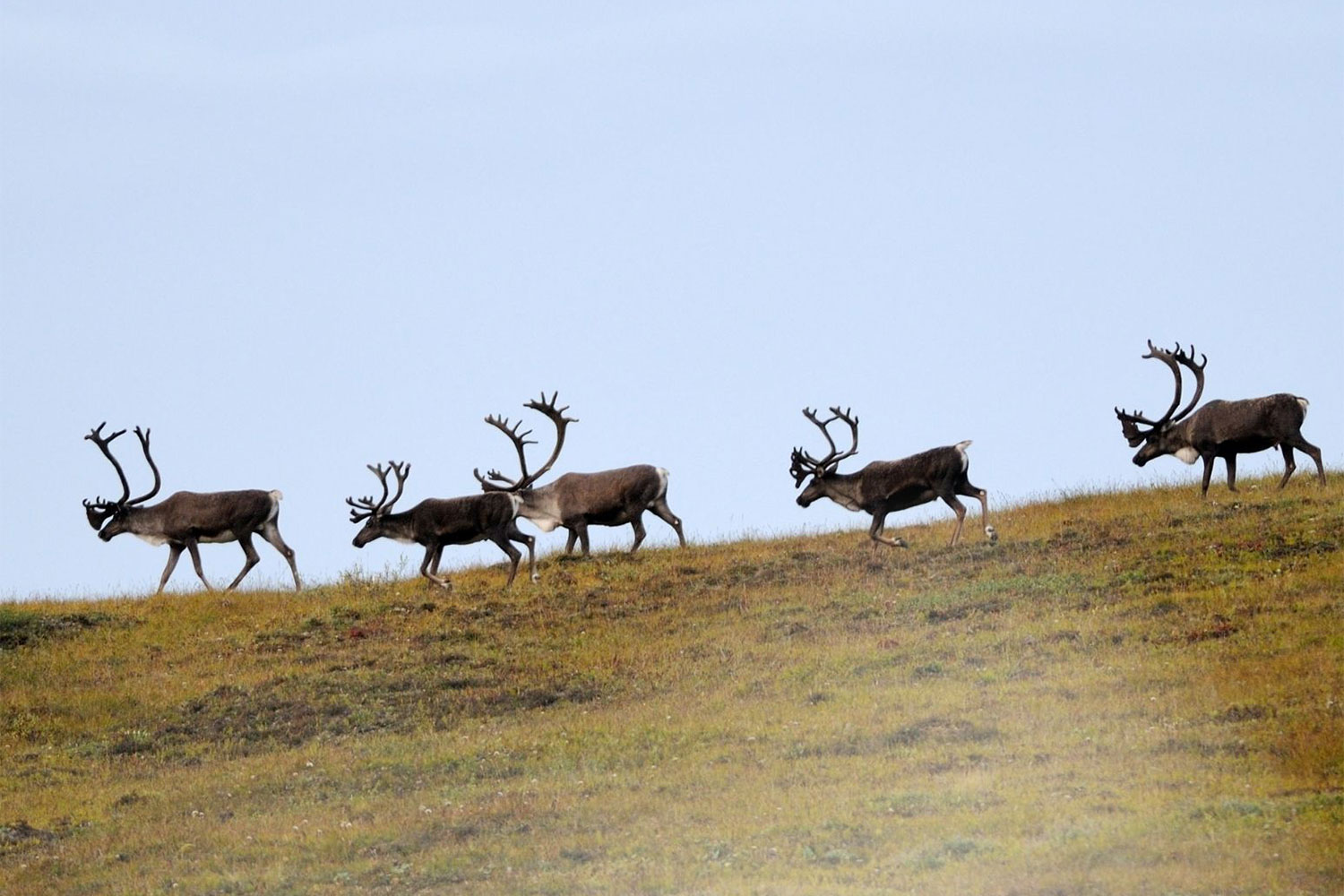Caribou in Alaska: An Educational Overview of Their Life and Habitats
Caribou in Alaska: An Educational Overview of Their Life and Habitats Caribou (Rangifer tarandus) are iconic animals found in the Arctic tundra, northern forests, and mountain regions of Alaska, Canada, and beyond. These resilient creatures have adapted to some of the harshest environments on Earth, making them a significant part of Alaska’s wildlife. This article provides an in-depth look at the caribou's unique features, behavior, migration patterns, and the challenges they face in the wild. Where Do Caribou Live? Caribou are native to the northern regions of North America, Europe, and Russia. In Alaska, they are spread across 32 different herds, each with its distinct calving and wintering areas. While caribou are referred to as reindeer in Europe, in North America, the term "reindeer" typically refers only to domestic caribou. The Alaska caribou population consists primarily of the barren-ground subspecies. These herds are distributed across diverse landscapes, from the Alaskan tundra to the mountain tundra, and even the northern forests. Notably, caribou are highly adaptable and can be found in areas ranging from snow-covered plains to coastal tundras, where they thrive in the coldest climates. Physical Characteristics of Caribou Caribou are large, hardy members of the Cervidae family (deer family). Here are some of the most notable features: Hoofs: Caribou have large, concave hooves designed to support them on snow and soft tundra. These specialized hooves also act as paddles when they swim. Antlers: Unique among deer species, both male and female caribou grow antlers. Adult males grow large and robust antlers, while females have smaller, thinner ones. In late fall, their coats shift to a clove-brown color, with white on their neck, rump, and feet. Size and Weight: Adult caribou bulls average 350-400 pounds (159-182 kg), but some can weigh up to 700 pounds (318 kg). Females are generally smaller, weighing between 175-225 pounds (80-120 kg). Caribou Life Cycle and Reproduction The reproductive cycle of caribou is an intricate process that revolves around their seasonal behavior:
- Calving: Calving occurs between mid-May to early June, depending on the region. Most females give birth to one calf per year, although twins are a rare occurrence. Newborn calves are usually 13 pounds (6 kg) at birth and can double their weight in just 10-15 days.
- Mating and Rutting Season: The rut, or mating season, begins in early September. During this time, bulls become more aggressive, battling for territory and access to females. Bulls’ necks swell significantly due to increased hormone levels. After the rut, injured bulls often fall prey to predators such as wolves and bears.
- Longevity and Growth: Caribou reach adulthood by one year of age and continue to grow in size until they reach full maturity.
- Calving Grounds: Caribou consistently return to the same calving grounds every year, which are typically located in the mountains or open coastal tundra.
- Migration Triggers: Caribou movements are often triggered by the onset of cold weather or snowstorms. Interestingly, they have an innate navigational ability, similar to migratory birds, allowing them to travel through unfamiliar territory to reach their destinations.
- Summer Diet: Caribou primarily consume the leaves of willows, sedges, flowering tundra plants, and mushrooms.
- Winter Diet: During the winter months, they rely heavily on lichen (also known as reindeer moss) and dried sedges.
- Migration and Feeding: Due to their migratory nature, caribou are constantly on the move in search of food. Large herds often travel in search of new feeding grounds, and smaller herds may remain in a single area throughout the year.
- Predators: Wolves, grizzly bears, and golden eagles are the primary predators of caribou, particularly targeting newborn calves during the calving season. Wolves often hunt in packs and can take down adult caribou as well.
- Human Impact: Overhunting in the past has caused some herds to remain low, but the introduction of sustainable hunting practices has helped stabilize many caribou populations.
- Climate and Weather: Caribou numbers can fluctuate due to changing weather patterns, such as extreme winters, or disease outbreaks that affect both predators and prey.
- What do caribou eat? Caribou primarily eat willow leaves, moss, and lichen, depending on the season.
- How far do caribou migrate in Alaska? Caribou can travel up to 400 miles (640 km) between their summer and winter ranges.
- Do caribou have predators? Yes, wolves, grizzly bears, and golden eagles are known to prey on caribou, especially calves.
- Are caribou populations stable in Alaska? Caribou populations fluctuate, but sustainable management practices have helped stabilize many herds in Alaska.

